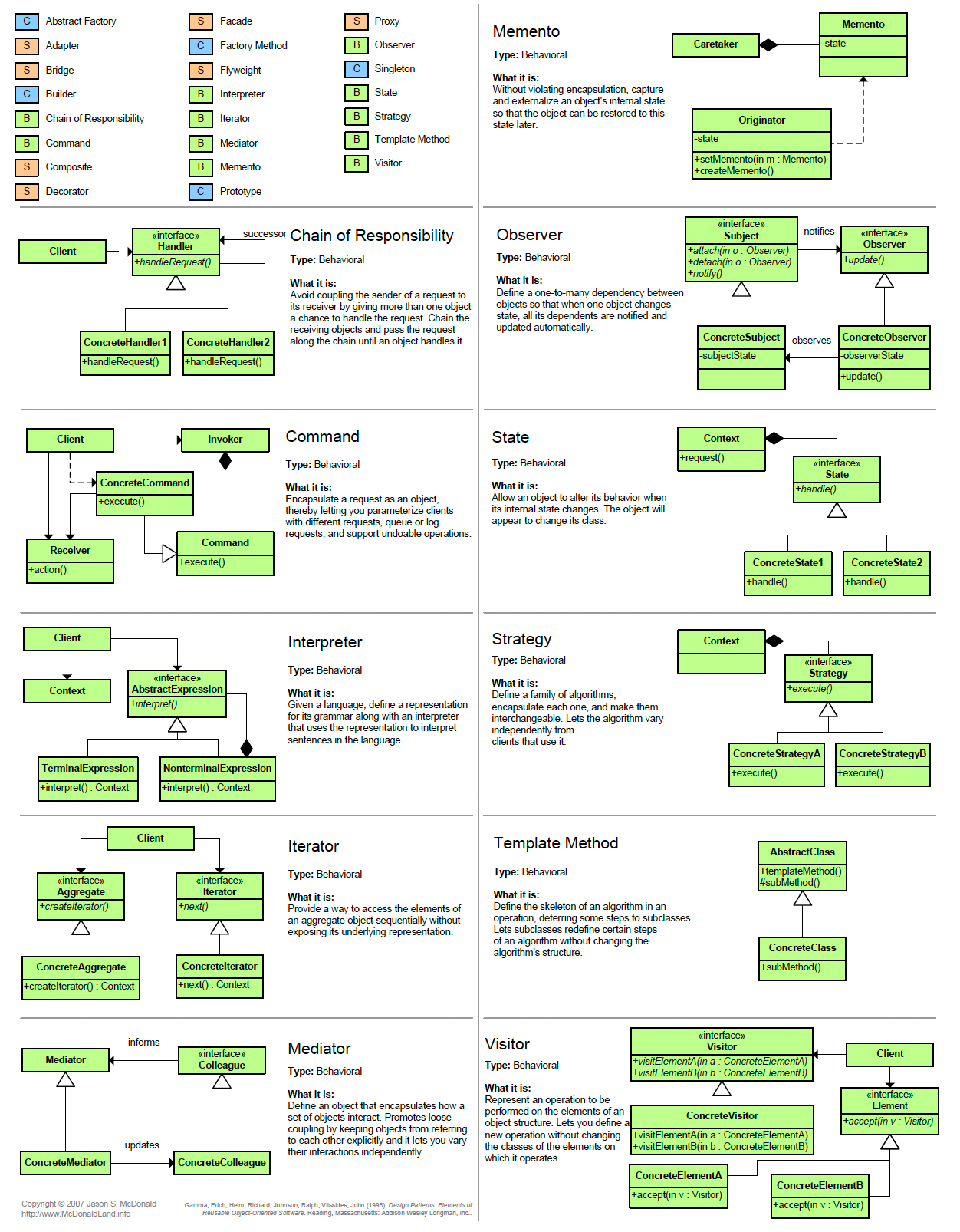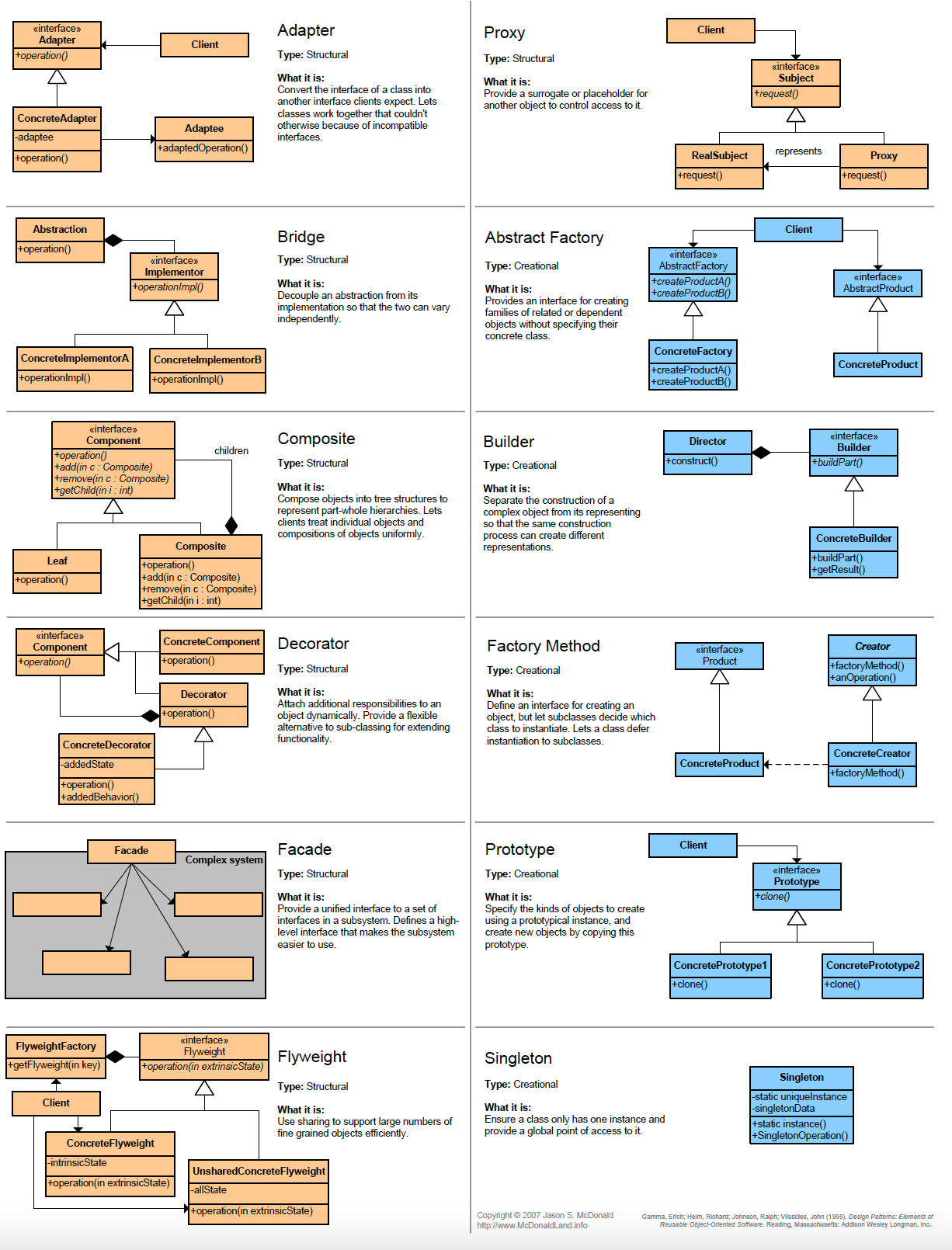# Design patterns
# Cheatsheet


# Creational Design patterns
Factory method (aka Virtual Constructor)
Provides an interface for creating objects in a super class, but allows subclasses to alter the type of objects that will be created.
Abstract Factory
Lets you produce families of related objects without specifying their concrete classes.
Builder
Lets you construct complex objects step by step. The pattern allows you to produce different types and representations of an object using the same construction code.
Prototype (aka Clone)
Lets you copy existing objects without making your code dependent on their classes.
Singleton
Lets you ensure that a class has only one instance, while providing a global access point to this instance.
# Structural Design patterns
Adapter (aka Wrapper)
Provides a unified interface that allows objects with incompatible interfaces to collaborate.
Bridge
Lets you split a large class or a set of closely related classes into 2 separate hierarchies - abstraction and implementation - which can bne developed independently of each other.
Composite (aka Object Tree)
Lets you compose objects into 3 structures and then work with these structures as if there were individual objects.
Decorator (aka Wrapper)
Lets you attach new behaviors to objects by placing these objects inside special wrapper objects that contain the behaviors.
Facade
Provides a simplified interface to a library, a framework, or any other complex set of classes.
Flyweight (aka Cache)
Lets you fit more objects into the available amount of RAM by sharing common parts of state between multiple objects, instead of keeping all of the data in each object.
Proxy
Lets you provide a substitute or placeholder for another object. A proxy controls access to the original object, allowing you to perform something either before or after the request gets through to the original object.
# Behavioral Design patterns
Chain of Responsibility (aka CoR, Chain of Command)
Lets you pass requests along a chain of handlers. Upon receiving a request, each handler decides either to process the request or to pass it to the next handler in the chain.
Command (aka Action, Transaction)
Turns a request into a stand-alone object that contains all information about the request. This transformation lets you parameterize methods with different requests, delay or queue a request's execution, and support undoable operations.
Iterator
Lets you traverse elements of a collection without exposing its underlying representation (list, stack, tree, etc.)
Mediator (aka Intermediary, Controller)
Lets you reduce chaotic dependencies between objects. The pattern restricts direct communications between the objects and forces them to collaborate only via a mediator object.
Memento (aka Snapshot)
Lets you sae and restore the previous state of an object without revealing the details of its implementation.
Observer (aka Event-subscriber, Listener)
Lets you defined a subscription mechanism to notify multiple objects about any events that happen to the object they're observing.
State
Lets an object alter its behavior when its internal state changes. It appears as if the object changed its class.
Strategy
lets you define a family of algorithms, put each of them into a separate class, and make their objects interchangeable.
Template Method
Defines the skeleton of an algorithm in the superclass but lets subclasses override specific steps of the algorithm without changing its structure.
Visitor
Lets you separate algorithms from the objects on which they operate.